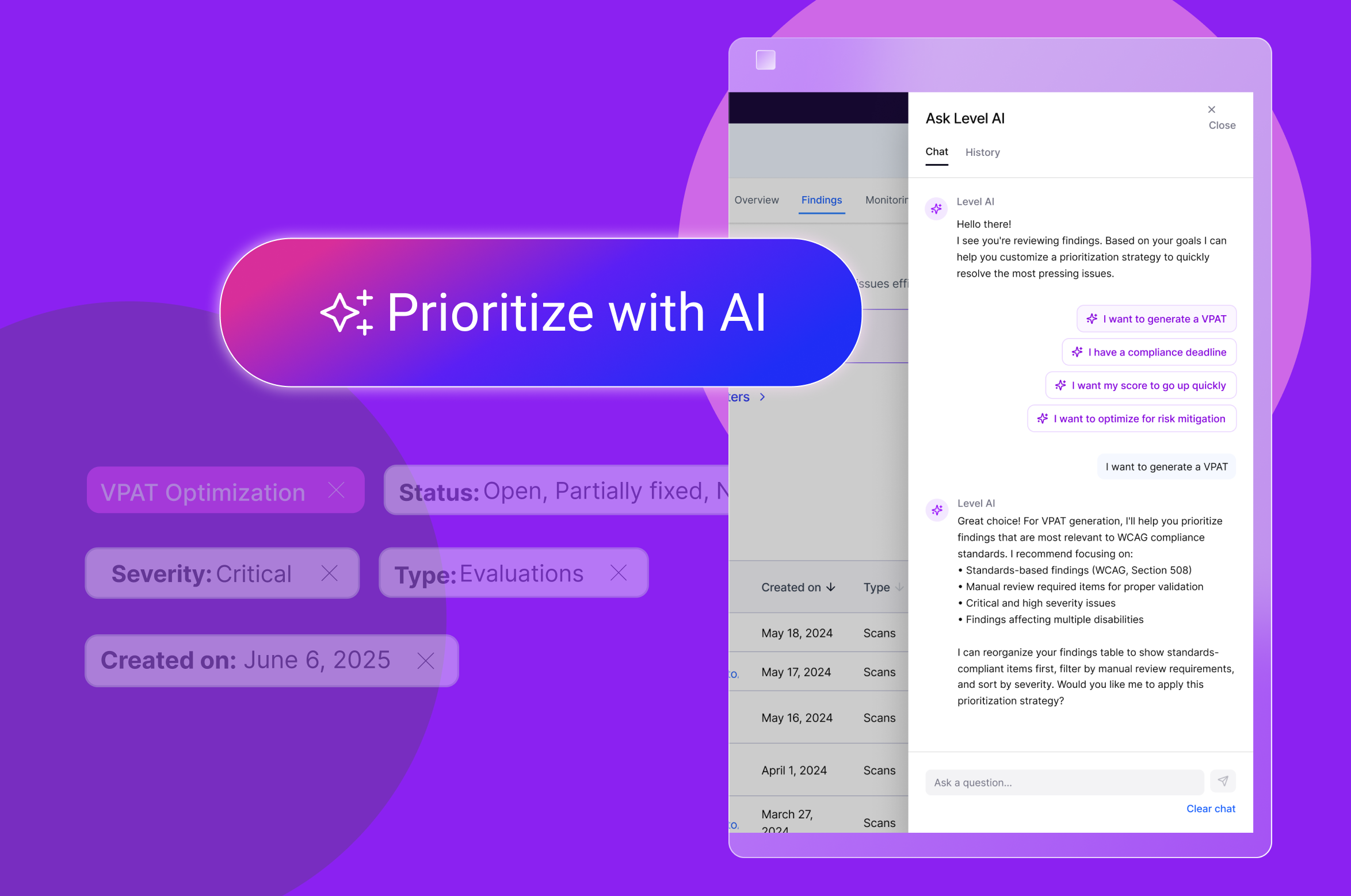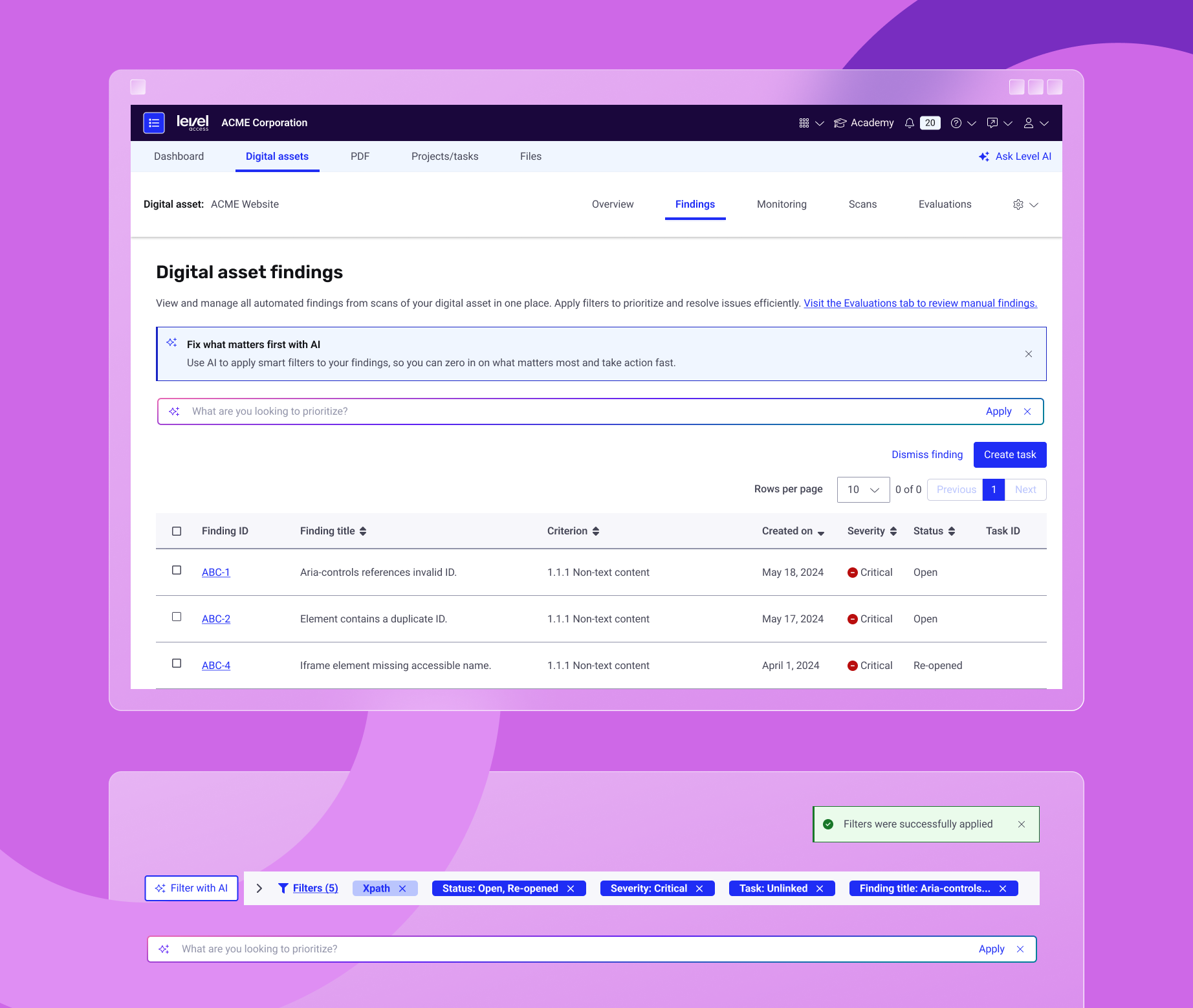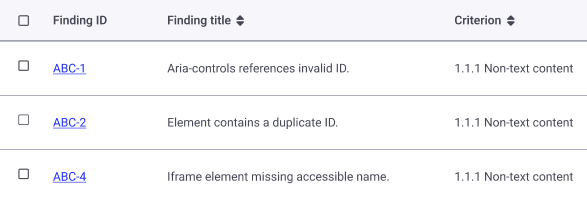Timeline
2025 – ongoing
Team
Product Management, Engineering, AI Research
TL;DR - Impact so far
- Translating remediation goals into prioritized results.
- Ranking findings based on business context like impact, traffic, or legal risk.
- Guiding users with structured, confidence-building flows.
Level Access helps organizations keep websites and apps accessible at scale. Teams often face hundreds or thousands of findings and don’t know where to start. This project uses agentic AI to, translate remediation goals into prioritized results, rank findings by business context (impact, traffic, legal risk), and guide work with structured, confidence-building flows.
This project explores how agentic AI can cut through the noise by:

The Prioritization Agent isn’t just a feature, it’s built as a platform engine that works across dashboards, setup, tables, evaluations, and remediation. I authored Level Access’s first Agentic UX Guidelines, now used to embed AI consistently across the product, and I lead the agentic UX strategy.
Research and discovery identified five recurring problems:


Goal: validate feasibility before investing in productization.

To rank findings against user goals (e.g., VPAT compliance, high-impact fixes).

Using mostly existing components, and building the AI design system components on the go.

Query execution, context handling, and ranked outputs.

Confirmed findings could be prioritized efficiently with real data and scale.

We turned the PoC into a guided experience embedded in the product and proved the prioritization agent could operate as an engine across context windows. We also tested whether users trusted and understood AI-driven prioritization in day-to-day workflows.


Here’s the MVP flow in action, the agent ranks findings through chat, applies smart filters, and the table displays the results and additional features.
As the MVP matured, the focus shifted to scaling the prioritization agent as a platform engine. My role moved beyond feature design to shaping the long-term vision and ensuring consistent, future-proof agentic UX foundations.
My involvement
Impact
As we embedded agentic AI into workflows, it became clear that we needed a systematic approach for consistency across the product. I initiated and authored the first Agentic UX Guidelines at Level Access, now adopted company-wide.
This work shifted my role from feature design to leading the agentic user experience vision across the company. Core principles include:
Looking ahead: as AI evolves, design shifts from humans using AI to agents working alongside humans. If agents create future content, websites, documents, media, our role may be to design systems that are readable and actionable by both people and agents.
-min.png)
Digital asset findings is a feature for the Level Access platform, designed to help teams organize, track, and resolve accessibility issues in real time.

Kuebiko, an internal tool designed to streamline the processing and cleanup of data sourced from various channels.